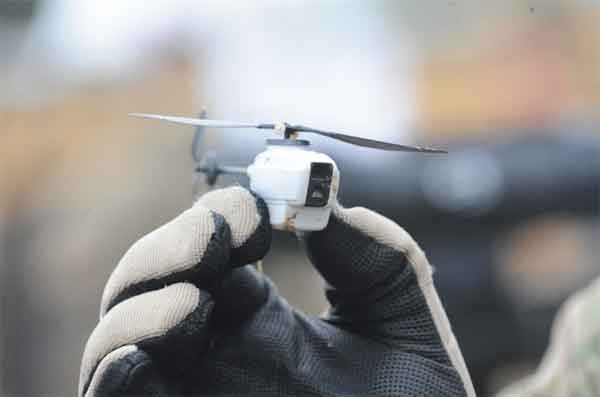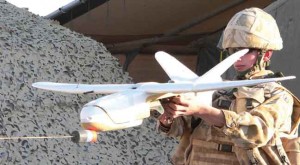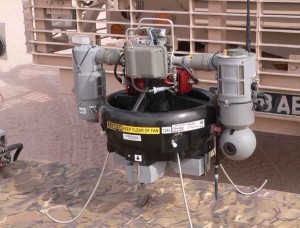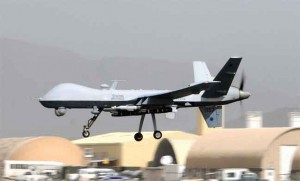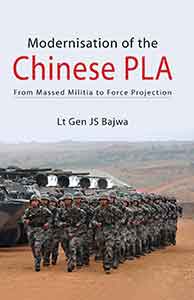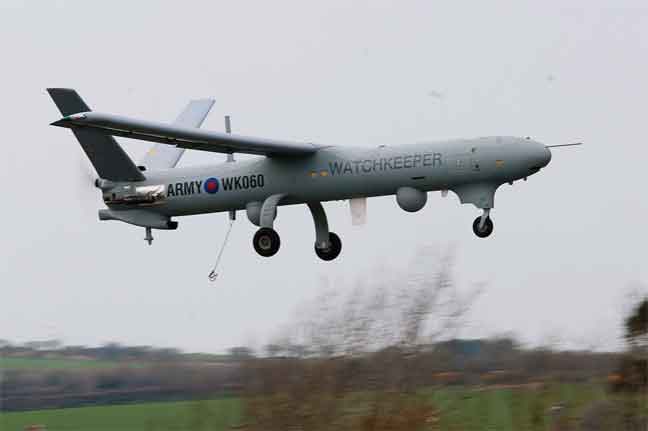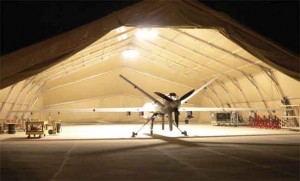As UAS technology matures and prices start to drop with from Commercial Off-The-Shelf (COTS) components, more agencies are becoming interested in adopting UAS platforms and the market is on the brink of yet another explosion. This will put more pressure on military users to refine the training of the man in-the-loop and for industry to look for innovative methods of keeping ahead of the expected surge in demand for UAS pilot operators.
The UK has spent more than $1 billion on delivering and sustaining Unmanned Air Systems (UAS)…
Unmanned Aerial Systems (UAS) are forecast to continue as the most dynamic growth sector of the world aerospace industry this decade with spending on UAS set to more than double over the next decade to more than $89 billion. UAS seem to have proved their value in Iraq and Afghanistan and are being sought by a growing number of militaries worldwide. With defence strategies pivoted to Asia and potential future operations in Anti-Access/Area-Denial (A2/AD) environments, there will be a requirement for longer-range and stealthy sensors for a variety of new and legacy UAV platforms.
High Accident Rate
However, despite the advantages that the UAS extend to the military, concerns regarding high accident rates continue with crashes reported from all parts of the world, caused mostly due to poor weather, human error and system failures. Such crashes not only lead to a waste of money but can also compromise highly classified missions. After more than a decade of operating UAVs in Iraq and Afghanistan, the UK Ministry of Defence (MoD) has revealed the extent of its UAS attrition and the impact of not having a UAS pilot training regime that was ‘fit for purpose’.
The UK has spent more than $1 billion on delivering and sustaining UAS, all purchased as Urgent Operational Requirements (UOR) since 2007. They range from the Black Hornet VTOL nano-UAV to the MQ-9 Reaper hunter-killer UAS and at the end of last year, the MoD revealed that the British military has lost more than 450 UAVs during operations in Afghanistan and Iraq. The vast majority of these were
Desert Hawk mini UAVs, operated by 32 Regiment of the British Army whose only previous experience of UAVs was with the Phoenix tactical UAV. Built by GEC/BAe, the Phoenix was millions of pounds over budget and took ten years to develop. During operations in Kosovo and Iraq in the 1990s, 36 of the 116 deployed air vehicles were lost or damaged beyond repair.
The British Army has lost a total of 11 Elbit Hermes 450 long-endurance tactical UAVs, more than fifty per cent of the acquired fleet operated by 32 Regiment in Afghanistan. A subsequent Service Inquiry (SI) blasted every aspect of the Army’s H450 UAV pilot training, from personnel selection through to the vehicle operation itself and the roulement model adopted for deployment.
Focus on Training
“There are currently no aptitude tests, verbal or numerical reasoning tests conducted to determine an individual’s suitability for H450 pilot training,” the SI report states, adding, “The continually increasing demands of the operational requirement since the Hermes 450 UOR began in 2007 is constraining the length available to train and qualify pilots.”
The British Army has lost a total of 11 Elbit Hermes 450 long-endurance tactical UAVs…
With no live flying available in the UK, student pilots undertake a preliminary six-week course on the H450 in Israel. The report states that, although this phase of training allows the students to experience flying the UAV, it does not allow for representative training of operations from Bastion Airfield. “For instance,” it says, “the students cannot interact with local air traffic control or other aircraft as all communications are made in Hebrew by the instructor. This leaves the student solely to focus on operating the H450, but could also inadvertently train them to ignore what is going on around them and therefore impact on their ability to develop airmanship and situational awareness.”
The lack of training of the GPS-Take-Off and Landing System (GTOLS) is cause for particular concern, the report noted. Students are meant to spend approximately ten hours of simulator time over a three-month period but a serious lack of equipment and qualified training personnel is hampering this effort. Indeed, the extent of this problem is so acute that students are in danger of forgetting what little training they have had in the GTOLS system and the procedures for its use by the time they deploy to Afghanistan.
Overall, the report stated that the army’s inadequate and truncated training pipeline of, “just enough, just in time” hampers the ability of the army’s UAV operators to develop a wider understanding of aviation.
In conclusion, the SI gave a stark warning. “Unless urgently addressed, the contributory factors identified by this SI are likely to continue to affect H450 operations and may contribute to a further accident or incident. Without action, there is also significant risk that these factors could be transferred to the Watchkeeper programme when it begins flying in the United Kingdom and on operations overseas.”
The lack of training of the GPS-Take-Off and Landing System (GTOLS) is cause for particular concern…
The Watchkeeper is a $1 billion programme to provide 54 short-range ISTAR UAVs developed from the Hermes 450 with a suite of sophisticated mission payloads. Thales won the contract in 2004 and crews from 32 Regiment of the British Royal Artillery are currently being trained at a dedicated facility in Larkhill that opened in 2010.
Selex ES was selected to deliver the through-life training solution for the programme is responsible for managing the development and delivery of training to meet the individual, team and collective training requirements of both operator and maintenance crews. A Learning Needs Analysis (LNA) identified the requirement for a balance of real and synthetic learning to enable crews to successfully transfer from a training environment to the complex operating environment of the Watchkeeper system and ensure operators are competent in their roles.
This training solution employs real-time desktop simulation and image generation in a scalable synthetic environment. It features classroom-based instruction facilities, physical models for assembly and disassembly, as also mock-up ground control stations through which operators will learn to control simulated TUAVs and their onboard suite of imaging payloads.
The Watchkeeper programme has the advantage of being able to conduct development testing and training flight in segregated UK airspace, in a restricted area in West Wales from a former military airfield at ParcAperporth. To date, the Watchkeeper air vehicles have flown more than 300 sorties since 2010, but the system has yet to be cleared for operational deployment in Afghanistan, four years after the planned date.
The Watchkeeper is a $1 billion programme to provide 54 short-range ISTAR UAVs…
While the British Army grapples to control and enhance its UAS training regime, the Royal Air Force (RAF) which operates the more complex General Dynamics MQ-9 Reaper armed Medium Altitude Long Endurance (MALE) UAS, has lost only two, one of which was retrieved and rebuilt. The British Army has addressed the training of pilots with the recognition of the growing complexity and capability of the systems and their increasingly pivotal role on operations.
At the Royal Aeronautical Society’s Sir Sydney Camm Lecture, Air Chief Marshal Sir Stephen Dalton, Chief of the Air Staff, RAF, expounded his view of UAS operations before he left the post in July this year.
He insisted that UAVs should be referred to as Remotely Piloted Air Systems (RPAS) and not drones with all their negative connotations and that the RPAS provide a key capability in current campaigns and will act as the basis for a persistent Combat-ISTAR capability in future conflicts. He also highlighted some of the limits and weaknesses inherent in RPAS, particularly in terms of transit times and survivability apart from many other constraints.
One of these constraints is the ability of the RPAS pilots. Under Project Daedalus, the RAF took a small cadre of personnel that were not qualified pilots and trained them to fly unmanned aircraft. Even though the trial was a success, in October 2011, the then minister of defence equipment, support and technology, Peter Luff said, “There is currently no requirement to train non-pilot officers to operate UAS as the RAF has a sufficient number of trained pilots available to meet planned requirements and there were no savings identified by the Daedalus trial.”
UAS in the RAF
However, in December 2012, and at Sir Stephen Dalton’s insistence, the RAF announced the creation of a specialised flying branch for those piloting RAF remotely piloted aircraft. As a sub-specialisation within the RAF Flying Branch those who qualify are known as RPAS pilots, the first of whom qualified in March 2013.
The United Kingdom is not alone in experiencing heavy losses of UAVs in frontline operations in Afghanistan…
The RAF has two RPAS Squadrons – No 39 Squadron currently based at Creech AFB in Nevada in the United States and No 13 Squadron based at RAF Waddington, Lincolnshire. The RAF currently flies the Reaper MQ-9 Remotely Piloted Aircraft which can be armed but are used primarily for real-time Intelligence, Surveillance and Reconnaissance (ISR) support from Kandahar Air Base in Afghanistan and are an integral part of the RAF’s airpower capability. Like manned aircraft, the Reapers are always under the control of human crew working to the same legal Rules of Engagement (ROE) but have the advantage over manned aircraft by being able to loiter or persist over a target area for far longer periods.
The establishment of the RPAS pilot flying branch has been designed to aid the recruitment and training of qualified pilots to support current Reaper-based operations but also gives the RAF the flexibility to convert and operate other future potential RPAS that might be considered by the MoD. The RAF pilots receive their training at Creech AFB on the L-3 Link Predator Mission Aircrew Training System (PMATS) that includes its High Definition Physics Based Environment Generator that enables large numbers of people and vehicles to move realistically through geo-specific databases.
Sir Stephen Dalton concluded his Sir Sydney Camm Lecture by saying that, “If the technology continues to develop as we expect, my judgment is that it will be possible to move towards a mix of about one third remotely piloted Combat-ISTAR platforms to two-thirds manned in the post-2030 era. However, we need to rapidly develop our thinking about the quite specific but different characteristics involved in Unmanned Combat Air Vehicles – fighting autonomously is very different to flying straight and level.”
Training will remain a key requirement for ensuring mission success, efficiently and safely…
The United Kingdom is not alone in experiencing heavy losses of UAVs in frontline operations in Afghanistan. The German MoD has admitted to losing 124 over the last 18 months including two IAI Heron 1 Medium Altitude Long Endurance UAVs, while the United States has lost hundreds of UAVs including more than 30 $4.5 million MQ-1B Reapers since 2010.
In an effort to reduce losses through pilot error, the US Air Force awarded a $20 million contract to provide comprehensive Predator and Reaper aircrew training services. Under the terms of the contract, CAE USA will provide classroom, simulator and live flying instruction as well as courseware development in support of the MQ-1 Predator and MQ-9 Reaper training programmes to be delivered at four USAF bases where approximately 1,500 MQ-1/MQ-9 pilots and sensor operators train annually.
The Future
Coalition UAS operations in Iraq and Afghanistan in the past decade have been conducted with no land or air threats which give cause for concern to battle planners who will have to develop tactics and training techniques if they are to avoid even greater loss rates in future conflicts. Training will remain a key requirement for ensuring mission success, efficiently and safely. As operators gain flight heritage inside and outside flight simulators, lessons will have to be learnt to better format the training programmes such that they enable the operator to match the operational efficiency of the proven manned platforms, which even today are still prone to pilot error.
As UAS technology matures and prices start to drop with from Commercial Off-The-Shelf (COTS) components, more agencies are becoming interested in adopting UAS platforms and the market is on the brink of yet another explosion. This will put more pressure on military users to refine the training of the man in-the-loop and for industry to look for innovative methods of keeping ahead of the expected surge in demand for UAS pilot operators.




